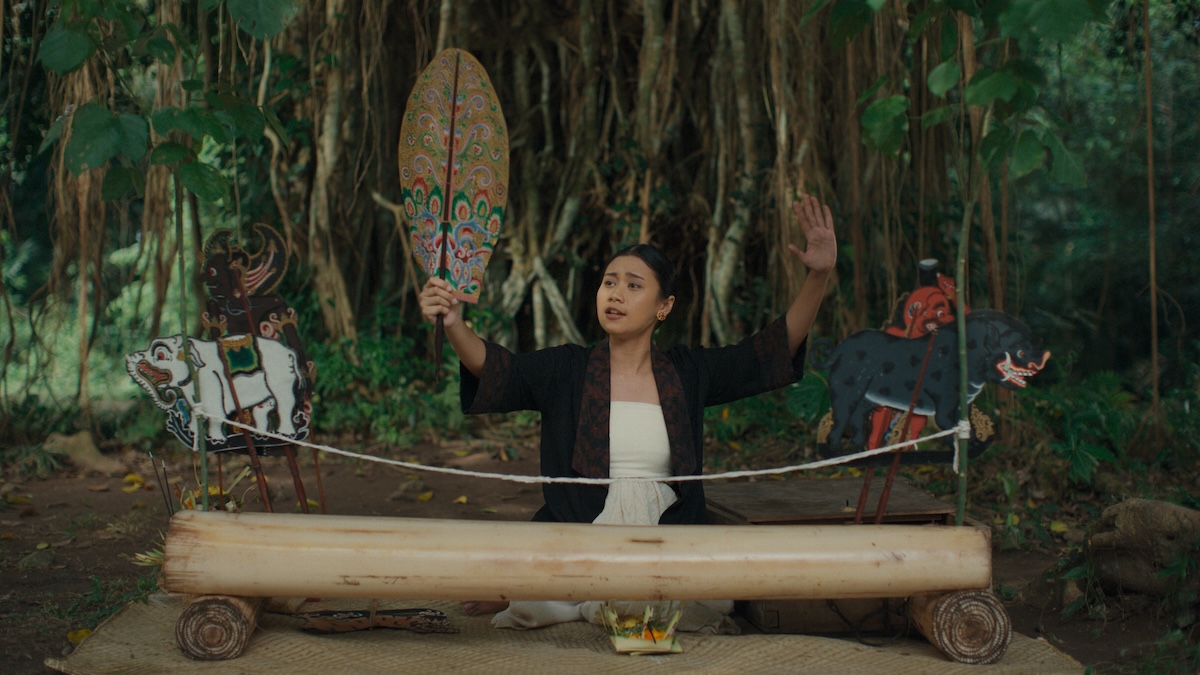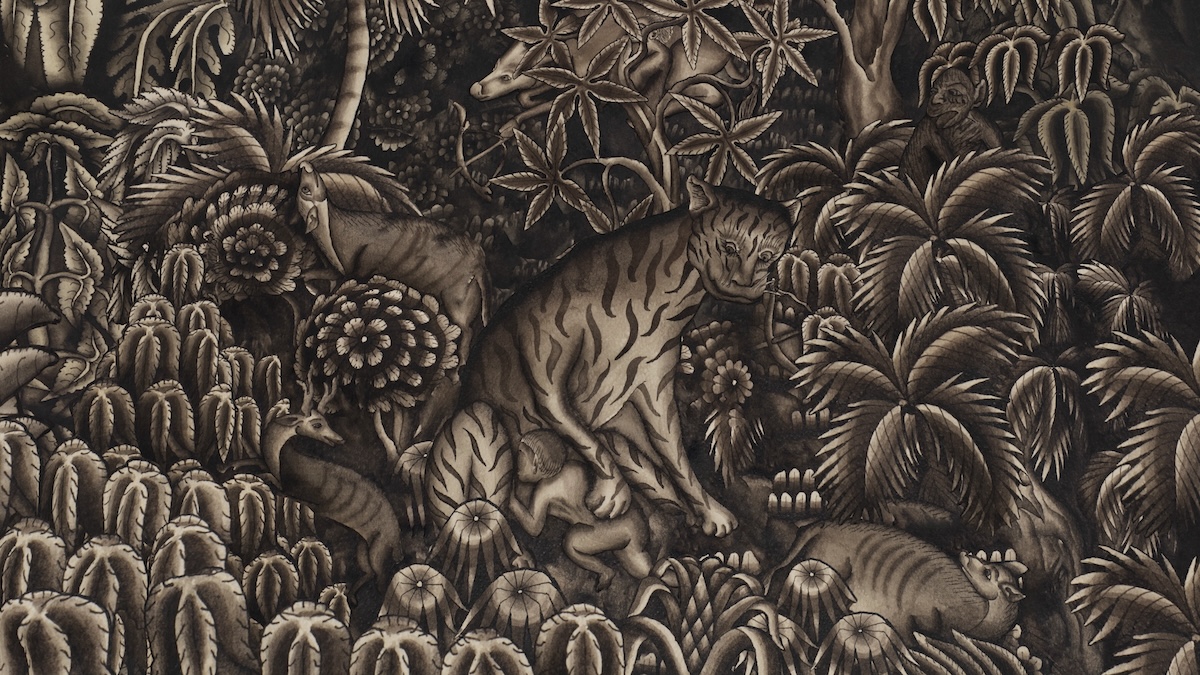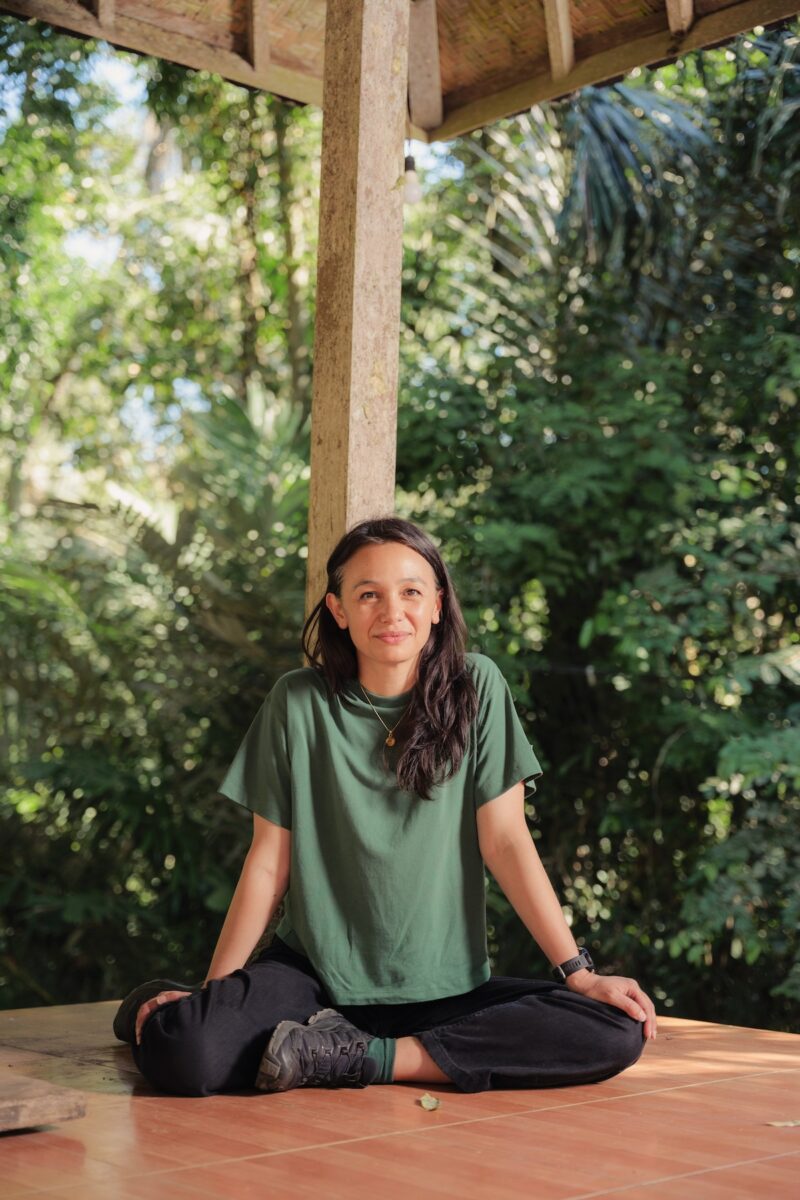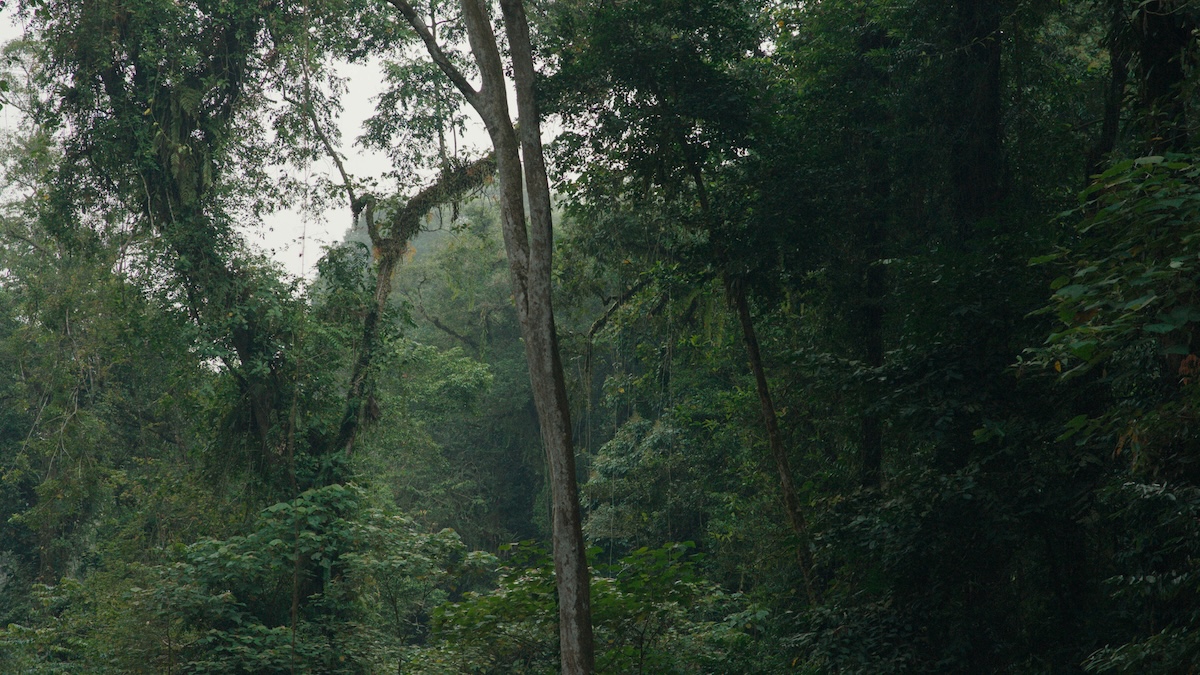
Making Space at the Table
NAP Contemporary’s group show, The Elephant Table, platforms six artists and voices—creating chaos, connection and conversation.






A green velvet curtain shades the entrance to Leyla Stevens’s exhibition PAHIT MANIS, Night Forest. Inside, the walls are virescent, almost black; the scene, as suggested by the title, is a forest after nightfall. Here, Stevens stages an encounter: between her single-channel video developed as part of a new partnership between the Art Gallery of New South Wales and Artspace, and four pen-and-ink paintings by Sanur artists loaned from the Australian Museum. Despite nearly a century-long gap between the making of the film and the paintings, both are being exhibited for the first time. Stevens has described this mutual moment of revelation as bittersweet (pahit manis). “It’s a word that comes about through bringing two opposites together,” Stevens muses, “it speaks to a sense of loss, but also revival.”
The exhibited paintings are part of a larger body of works produced in Batuan and Sanur, mostly commissioned by the American and English anthropologists Margaret Mead and Gregory Bateson in the 1930s. With many held in overseas collections, they accrue value as historical artefacts, registering the influence of a foreign ethnographic gaze and the supposed beginnings of a Balinese artistic modernity. But, as Stevens remarks, “it depends on who you are.” The artist speculates about another kind of encounter, which might take place outside the colonial archive and its attendant social procedures: “for Balinese engaging with them, these are actually moments of recognition: ‘Oh, these are the stories I heard of when I was a kid, or these are stories my grandparents would tell.’”
The exhibition is propelled by this desire to engage with these paintings as part of contemporary cultural and artistic practice, and to recover the perspectives of the original painters. Permission was sought from the families of the artists, and Made Griyawan, a descendent of master painter I Wayan Taweng, is filmed working with the delicate tones of natural pigments, in contrast to the black-and-white pen ink of the archived paintings. The gentle clinks of Griyawan’s pestle and stones are accompanied by a narration of a transcribed dream of master painter Ida Bagus Made Togog. “On the one hand, it’s this funny, strange little dream he has about going fishing with a friend and losing his fishing rod and getting into trouble. It doesn’t have that big, grand meaning, right?” But Stevens insists on its inclusion: “There is Togog’s voice, there are his memories in the archives. His presence can be felt through these dreams.”
Animation, also, is a means for Stevens to redress the stillness of the archive. Having developed a practice around modes of expanded documentary, the artist now reflects on an urge to shift her approach. “Increasingly I’m moving away from simply documenting to a stronger response—revitalising and connecting these collections to living forms of culture—and intentionally moving away from these static archival forms.” And the paintings lend themselves splendidly. Stevens activates compositions which already pulsate with exquisite details of vegetation and animalic figures; and where dynamic gradations of ink billow from the edges of lines, creating the illusion of forms emerging and retreating into shadow.
Animation operates in multiple senses. Sequenced to lunar phases, the film begins with the staging of a wayang lemah performance by Ida Ayu Sri Widnyanyi, a female dalang (shadow puppet master). Stevens’ lens dwells on the ritual prayers which precede the performance; we observe the puppets rise above a skyline delineated by a cord strung between two dadap stalks, before striking the banana stem as the dalang awakens—animates—each one. Stevens notes, “in that moment, they’ve become alive.” Widnyanyi herself is transformed also, into the mythological figure of Tantri, to tell the story of the Macan Gading (White Tiger) and the destruction of its forest home. In this story-within-story, fictive space mirrors contemporary reality. For Stevens, this is a matter “of working through how to bring together this past, but also future reckoning with Bali’s landscapes.” Knitting together the performance and the paintings is a score populated with recordings from one of Bali’s last remaining old-growth forests in Jembrana. In this soundscape dense with the buzz of insects, cooing owls, and the agitations of birds in flight, Stevens is both recalling and recording forests lost, imagined, and still standing.
In PAHIT MANIS, Night Forest, past meets present. More than a chance encounter, however, this is a collaborative exercise in restitution, and a call to critically scrutinise the systems of conservation and documentation we have inherited. “The argument is that we expand the life of these objects by putting them in conditions so that they cannot age, but by doing so, they become dead objects, totally divorced from the original context and from the communities that would know how to engage with them and understand them.” Stevens deals with the frictions between possession and loss, remembrance and erasure, and continuity and change, all accompanying a compulsion to revive past forms in contemporary time. A film like this shifts the vantage point from which we perceive the material traces of the past. Stevens confesses, “It’s my secret way of getting the paintings exhibited…to have them shown in a contemporary art context, you know? It’s about reframing them.”
PAHIT MANIS, Night Forest
Leyla Stevens
Art Gallery of New South Wales – North Building
2 November—16 February 2025